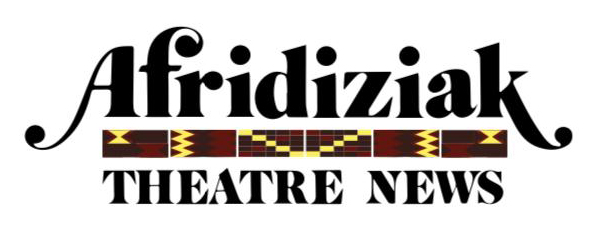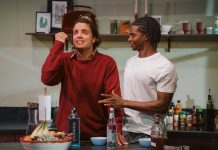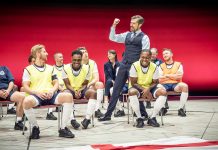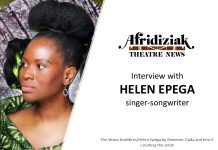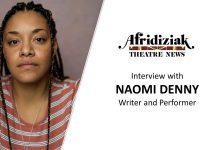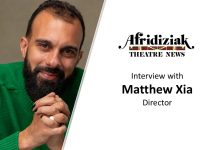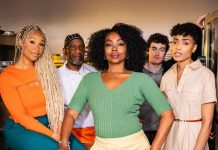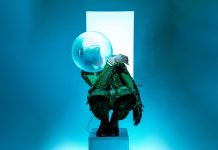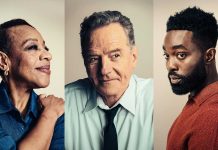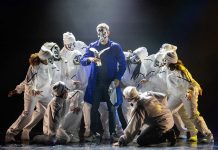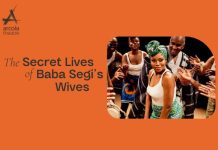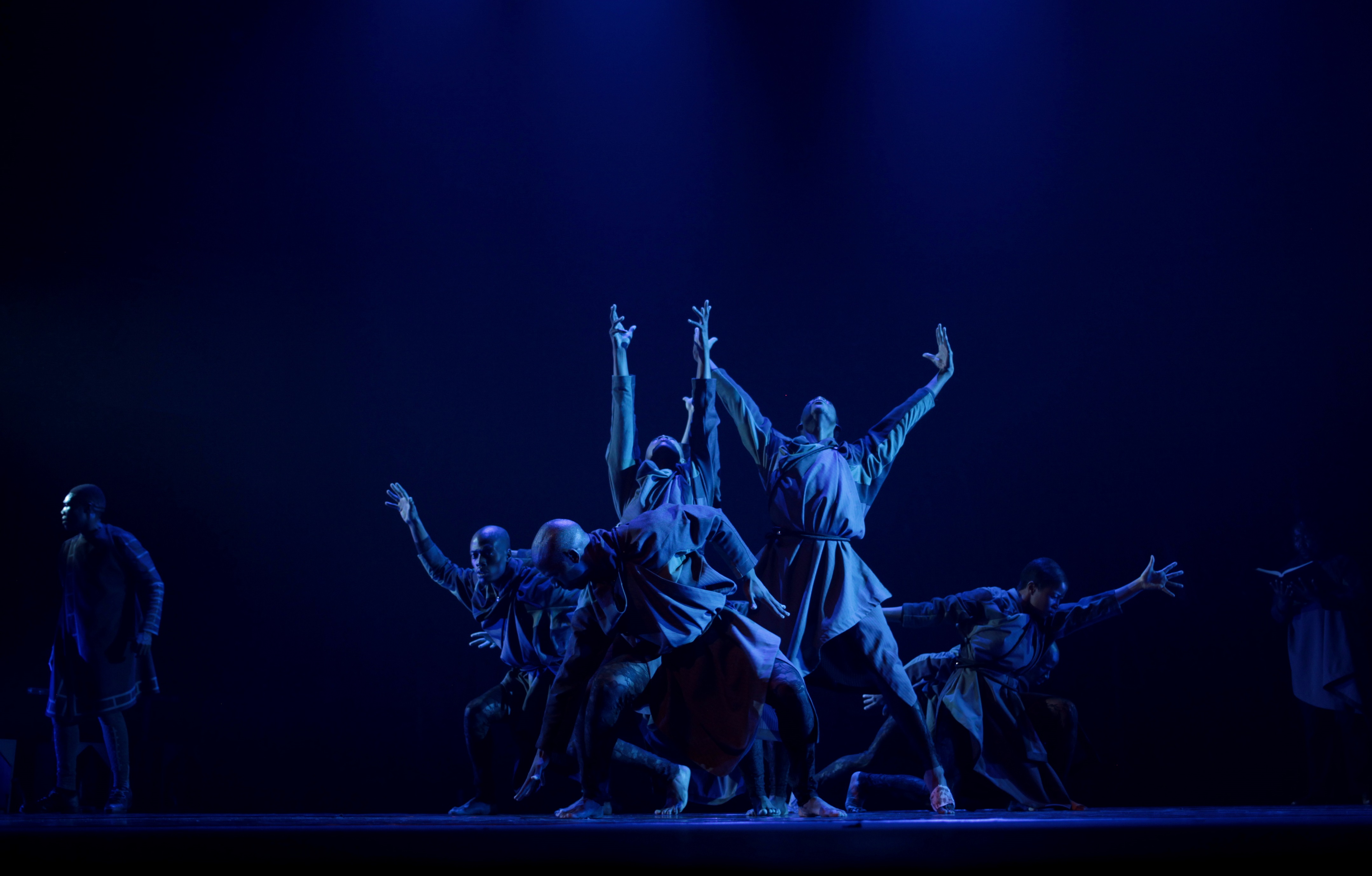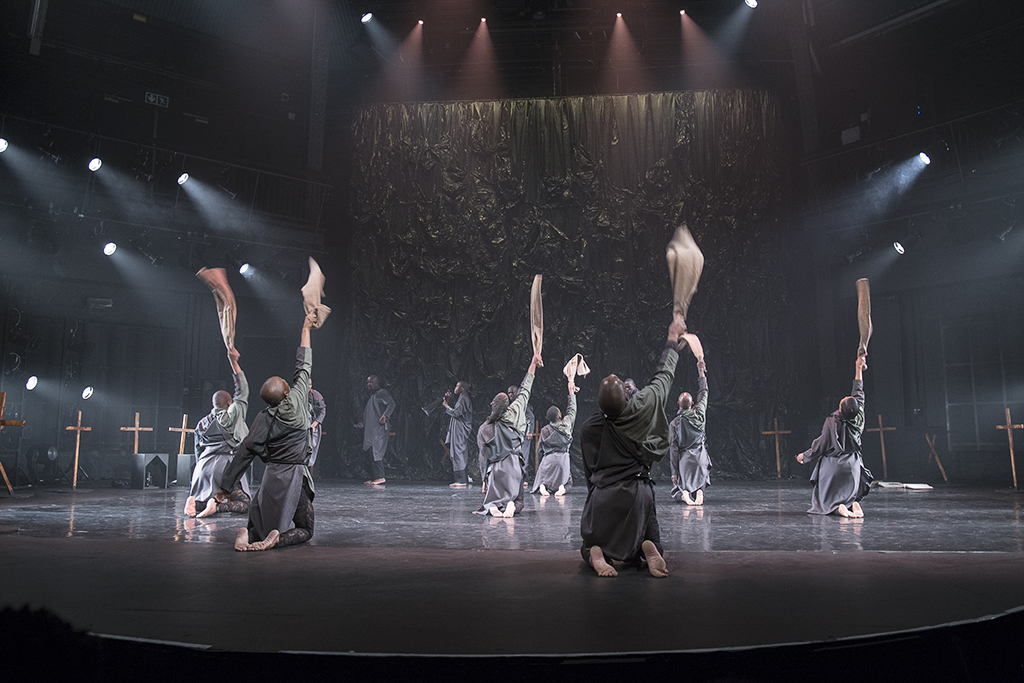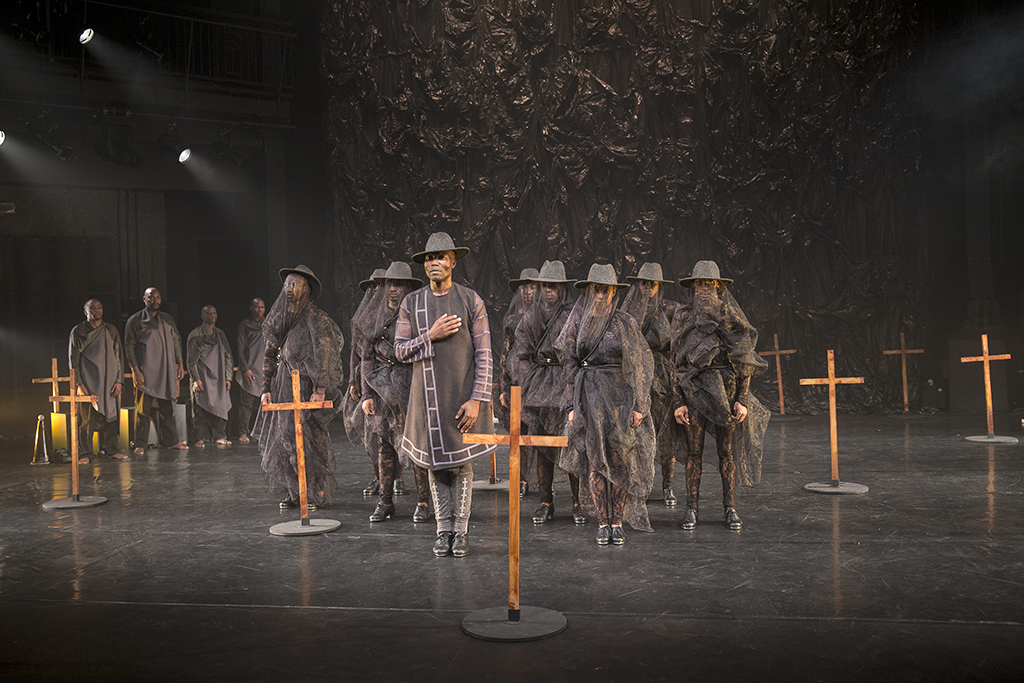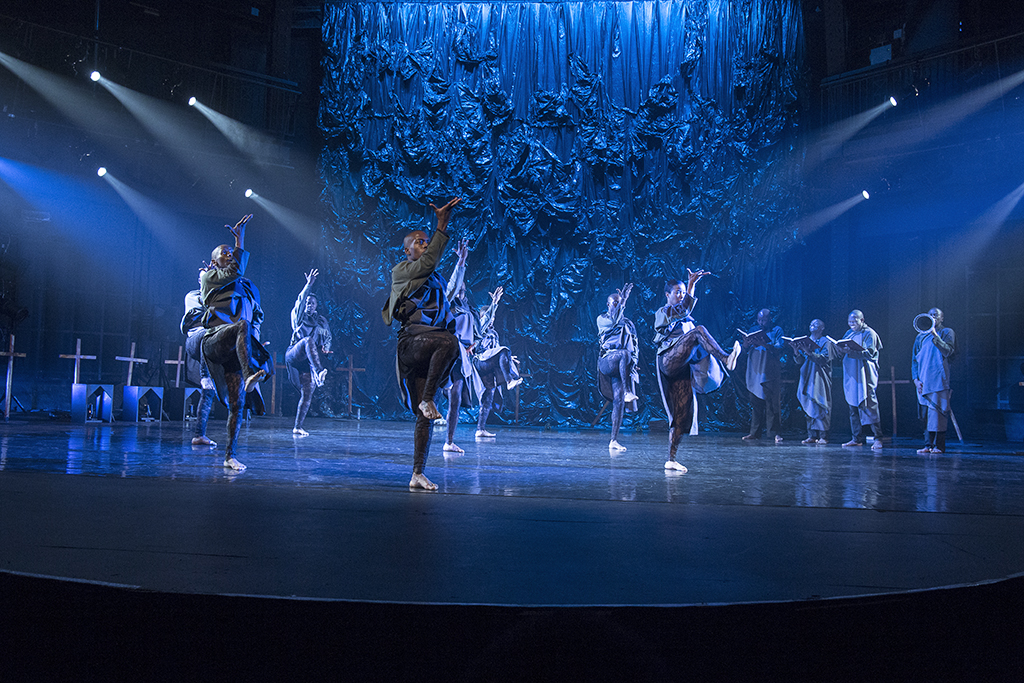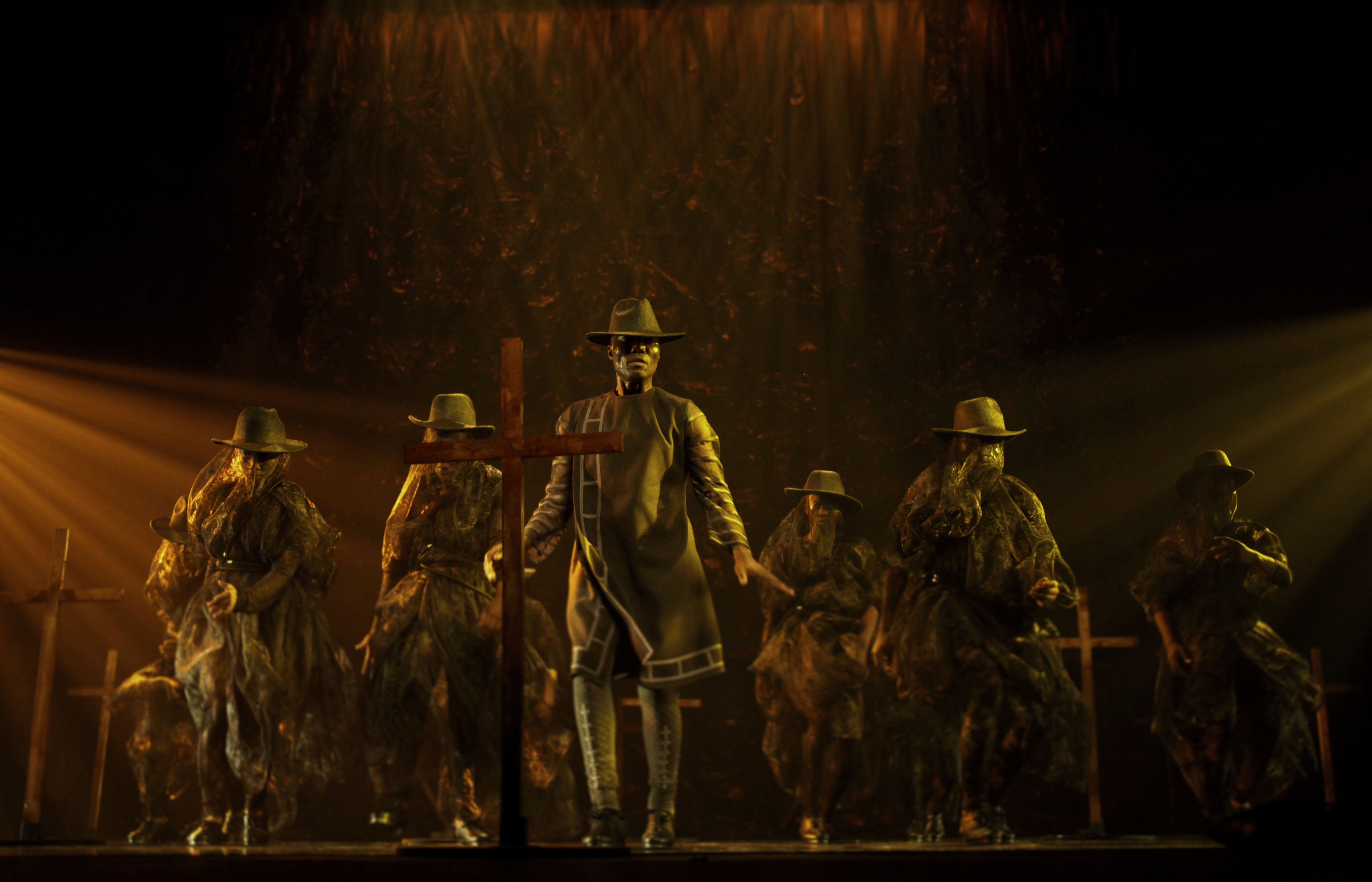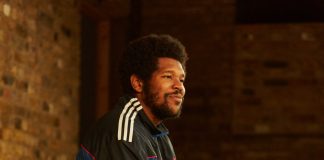This dance piece by South African dancer, choreographer and performer Gregory Maqoma – part of the international dance festival Dance Umbrella – is billed as an intense examination of humanity’s ‘shared burden of grief and mourning’; and so it proved.
With eight dancers and four amazing male singers onstage, this piece uses several different South African musical a capella structures (i.e. ‘Isicathamiya’) – as well as aspects of Ravel’s Bolero, and a snippet of gospel classic ‘Wade in the water’ – to help explore the way humanity engages with itself; both the living and the dead.
Starting off in darkness, a sobbing, weeping figure shuffles onstage. To the accompaniment of a lone onstage drummer, the histrionic wailing coalesces – with the aid of the other singers – into a high-pitched musical lament, as the eight dancers are revealed in a deep central huddle.
The main protagonist within the dance narrative is Maqoma; his character appearing to be a ‘guileless traveller’ making his way through what appears to be a series of battles / conversations between (a Christian-based) religious conservatism and a more ancient tribal traditionalism.
The other dancers perform around him a series of freezes, twitches, leap, slo-motion holds and dramatic circular sweeps; the dance stylization appearing to be influenced as much by The Matrix and Hip-Hop, as by Flamenco and Zulu dance styles.
The dancers all perform the choreographed stories well, and there is a pleasing clarity to the relationships and ‘conversations’, despite barely a word of English being uttered onstage.
It is, however, for the live vocal music that the most praise must be reserved.
Composer and Musical Director Nhlanhla Mahlangu’s evocative series of a capella songs are beautifully brought to life by the singers. At times, the four males sounded not unlike a whole village, with all the attendant emotional depth, and width of vocal range one would expect from such a gathering.
Certainly, the execution of the ‘Isicathamiya’ music – including aspects of the Bolero, and various other motifs brought to life through different keys and tempos – was, at times, spellbinding.
The integration of the four singers into the – at times, frantic – choreography was also seamless and well executed.
Special mention must also go to BlackCoffee’s costumes (especially the lace shrouds), Mannie Manim’s superb lighting design, Ntuthuko Mbuyazi’s chilling and effective sound design.
Indeed, everything presented onstage supports conceiver Gregory Maqoma’s vision in bringing an effective – effecting – dialogue between the living and the spirits.
